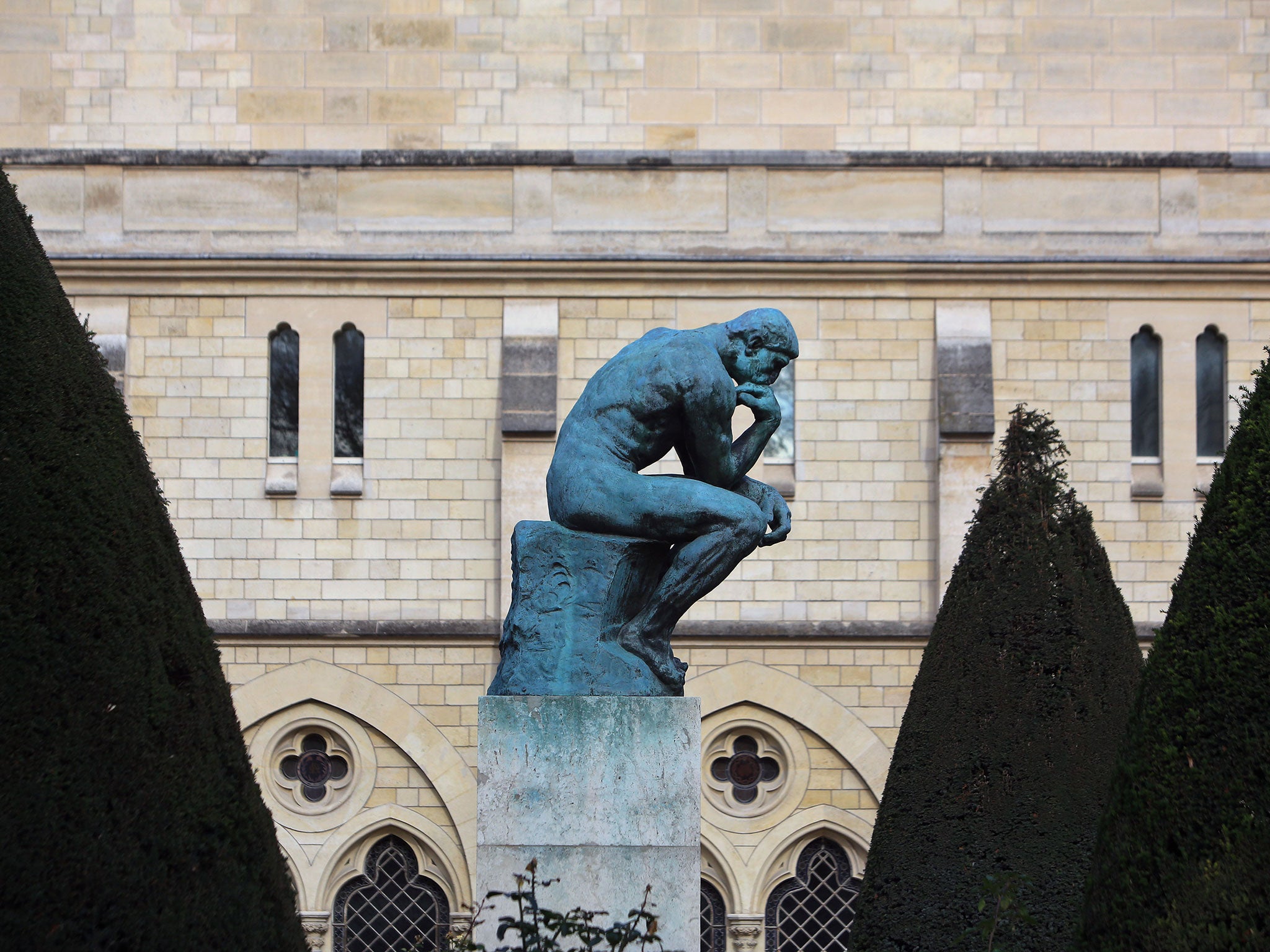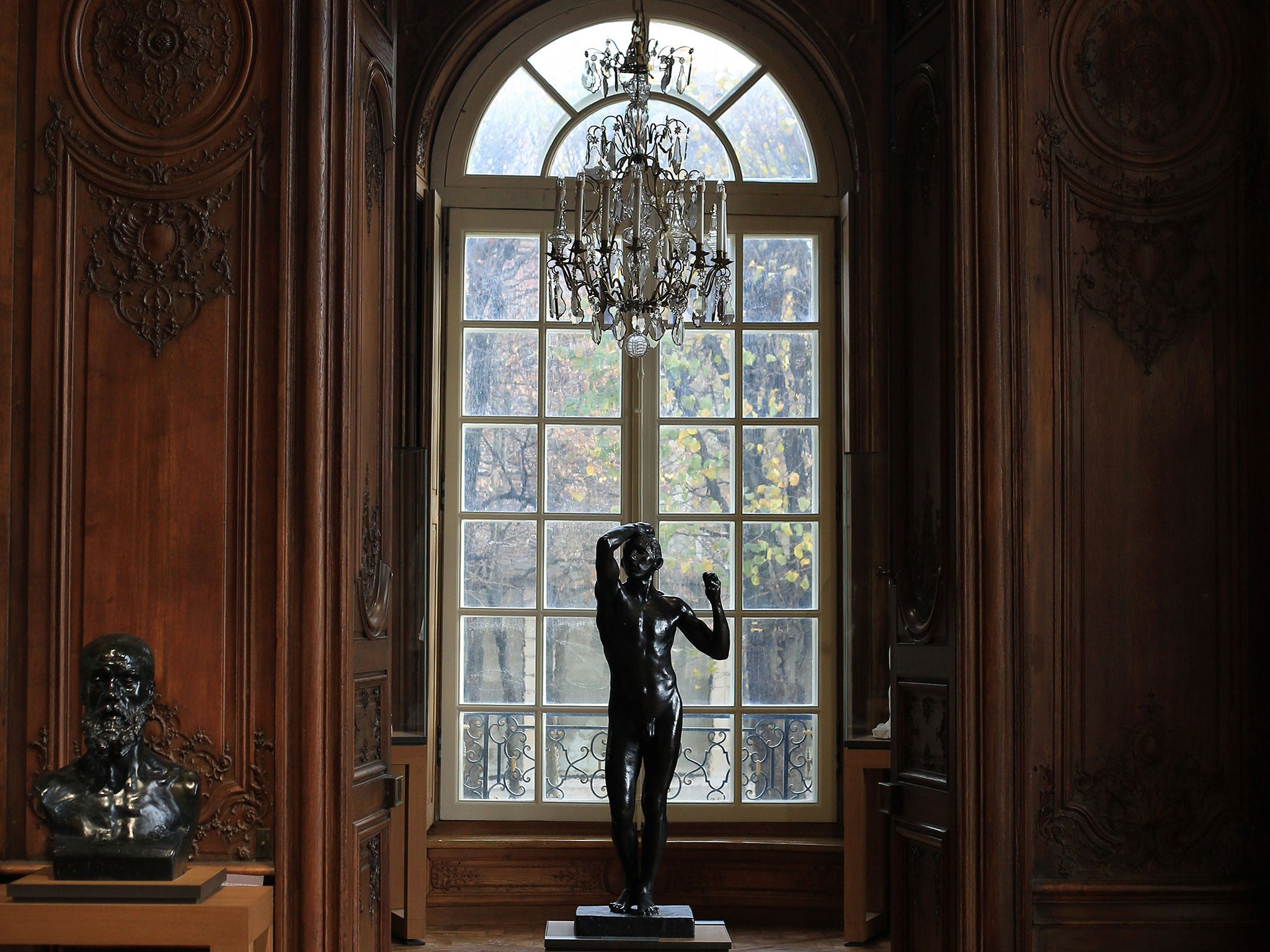Rodin Museum in Paris reopens after €16m renovation and will display previously unseen examples of sculptor's work
The exhibits will shed new light on a man the painter Paul Cézanne said no one knew 'deep down'

Your support helps us to tell the story
From reproductive rights to climate change to Big Tech, The Independent is on the ground when the story is developing. Whether it's investigating the financials of Elon Musk's pro-Trump PAC or producing our latest documentary, 'The A Word', which shines a light on the American women fighting for reproductive rights, we know how important it is to parse out the facts from the messaging.
At such a critical moment in US history, we need reporters on the ground. Your donation allows us to keep sending journalists to speak to both sides of the story.
The Independent is trusted by Americans across the entire political spectrum. And unlike many other quality news outlets, we choose not to lock Americans out of our reporting and analysis with paywalls. We believe quality journalism should be available to everyone, paid for by those who can afford it.
Your support makes all the difference.The 18th-century Parisian mansion where the sculptor Auguste Rodin produced his most famous works has been fully renovated for the first time since his death.
After a €16m (£11.4m) revamp lasting three years, the Rodin Museum will reopen on 12 November, 175 years after he was born. Previously unseen and restored works taken from the sculptor’s house and the museum’s own vast collection will be on display for the first time, shedding new light on a man the painter Paul Cézanne said no one knew “deep down”.
“I think we reveal a much more complete Rodin than before,” the museum’s director Catherine Chevillot told The Independent. “We were able to bring lots of works out of storage, and lots of plasters that show the different stages of his work”.
More than 80 of the 123 restored sculptures are moulds, including the first ever known figure of The Thinker, which would come to be his most famous sculpture.
Also on show are the studies of his monument to the writer Honoré de Balzac – one that triggered so much outrage by departing from contemporary sculpture that its commissioner, the Society of Men of Letters, rejected it outright.
The figure of the writer, whose novels exposed both the excessive wealth of 19th-century Paris as well as its underbelly of crime and poverty, was deemed excessively naturalistic. Instead of the traditional representation of the man of letters with a pen and paper in hand, Rodin created a grotesque figure with a furrowed brow, hunched in a dressing gown to keep warm since he used to write at night.

On show is the mould of a dressing gown supplied by Balzac’s tailor that he threw in to plaster to make his sculpture as realistic as possible. Many of the new figures on display were remoulded in plaster and terracotta after being set in bronze: for Rodin, a work was rarely truly finished. The museum has also brushed off earlier and later versions of some of the characters in his macabre The Gates of Hell, a six-metre-high doorway commissioned in 1880 to adorn a museum that never opened.
Among the writhing sinners on the structure, which is on display in the museum’s garden, is the figure of the Damned Woman. In a newly unveiled plaster we see her as a sensual Mary Magdalen, caressing an ailing Christ.
She reappears in a statue that was displayed before the renovation as a muse of the poet Victor Hugo, with her arms and part of her legs removed: a nod to classical Roman and Greek sculpture of which Rodin was so fond.
He had taken advantage of the huge archaeological findings at the end of the 19th century, buying at auction small pieces of unearthed statues found in Greece and Italy that other museums had refused.
I think we reveal a much more complete Rodin than before
One of two new rooms is dedicated to these disembodied hands, feet and torsos that were exhibited two years ago but never made it in to the permanent collection.
In the second, his studio has been reconstructed based on photographs taken at the time, complete with Roman torsos on wooden crates and a screen behind which the models for his more erotic sculptures would undress. Rodin immortalised himself as successfully as the figures he sculpted by bequeathing all of his property and works to the state a year before his death.
Join our commenting forum
Join thought-provoking conversations, follow other Independent readers and see their replies
Comments